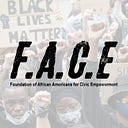A Brief Look at Bloody Sunday
Ending this systemic racism, that is ingrained in the US police structure, is possible only by developing minds.
The world occasionally witnesses racial violence and cruelties by the US police force, but quickly everything returns to normal, and no serious action is taken to fight such racial acts. But ending this systemic racism, that is ingrained in the US police structure, is possible only by developing minds.
But what we want to write about is the tragedy that happened in Selma, Alabama. 56 years ago, around 600 Black demonstrators were attacked, during a peaceful march calling for Black voting rights.
Actually, on March 7, 1965, around 600 people crossed the Edmund Pettus Bridge in an attempt to begin the Selma to Montgomery march. State troopers violently attacked the peaceful demonstrators in an attempt to stop the march for voting rights. It was there that law enforcement officers beat unarmed marchers with billy clubs and sprayed them with tear gas.
Additionally, Activist Amelia Boynton Robinson was brutally beaten by Alabama state troopers during the march. This drew national attention to the cause and captured the brutality of the struggle for African American voting rights. Robinson was a leading organizer of the march, working directly with Dr. Martin Luther King Jr. and the Southern Christian Leadership Conference (SCLC). Robinson had a history of activism, co-founding the Dallas County Voters League in 1933, and held African American voter registration drives in Selma from the 1930s to the 1950s.
To conclude, the formation of the United States of America in 1776 can be considered the official beginning of the suffering of people of color in this land. But as Martin Luther King said: “Our lives begin to end the day we remain silent about the things that matter.” So let’s fight to achieve our rights.

